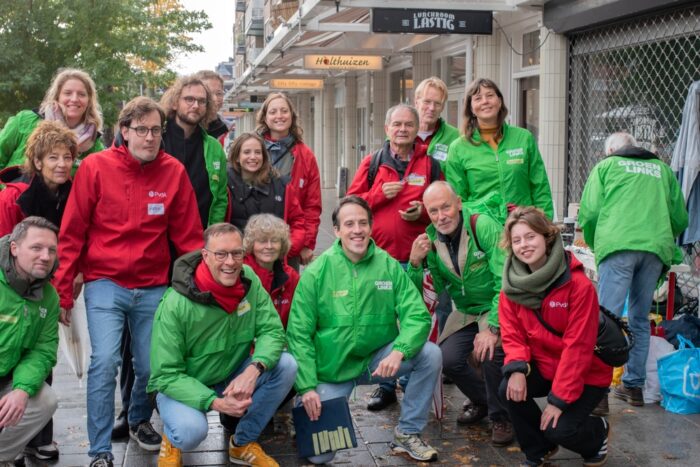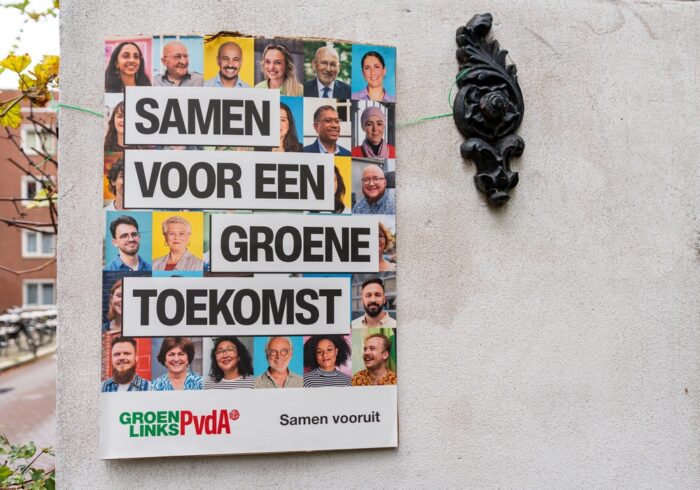The Progressive Post
Romania keeps its right turn, but is there any hope for the Left?
The parliamentary elections in Romania on 6 December brought relief and even some hope for the future for Social Democrats. The party stabilised its level of support to 30 percent of the vote, virtually the same result as in the September local elections. However, centre-right parties secured around 40 percent of the vote and are set to form a governing coalition with the help of the political party representing the Hungarian minority in the country.
Just a year before, the Social Democrat Party reached an electoral nadir with just 22 percent of the vote in both the European and, later on, presidential elections. The scale of the trouncing is revealed by the loss in support compared to previous elections during the 2010s. At the 2014 European elections, the party secured half of Romanian MEPs; in 2016 it reached its all-time high, with 45.5 percent of the vote in the parliamentary elections. Despite presiding while in government over a booming economy and a huge increase in real terms of the standard of living, the party somehow managed to lose half of its level of support in relative terms and more than one third of its voters. That was shocking.
Much of the ups and downs of the party could be seen in the composition of the voting blocks that form its coalition. The peculiarity of Romania and other South Eastern European countries is that, unlike in Western Europe, electoral support for the left or centre-left comes not from inner cities and the young, but from older, predominantly rural, low income, small-c conservative groups. By 2019, the party was reduced to a core of mainly retirees and rural voters. Both these groups are a legacy from the party’s vow to deliver social protection during the traumatic transition period in the 1990s. Also, both groups are dwindling demographically. From a majority or plurality in all social strata in 2016, the party was reduced to a rump coalition. Territorially, it started to look like a regional party, with support mainly from rural, undeveloped, and depopulated Southern counties. The 2020 election cycle saw the party recover some support in the urban areas and become competitive in almost all the regions, not just the South. For the future, the main challenge is to (once more) secure the support of the key voting bloc in Romania: low to average paid employees in manufacturing and the service sector, mainly with secondary education and aged 45 to 64, that mainly reside outside the Carpathians.
In the long run, the party will also have to develop a strategy for winning or containing four important voter groups. Firstly, the upper-middle class: affluent, professional, urban voters with a deep and permanent hostility to the left. No amount of policy and ideology triangulation has worked in the past and none will work in the future. In emotional terms, these voters harbour a gut-level hate for the Social Democrats and the left in general.
Secondly, young voters. Although demographically not a large group, over time they will replace the previous generations. This group has anti-establishment views, but, unlike in Western Europe and the US, it is mainly directed against the Social Democrats, which are seen as The Establishment Party and deeply corrupt.
Thirdly, there is the small c conservative part of the coalition. This voting block overlaps, but does not wholly include the anti-establishment, anti-globalist vote. Broadly, both groups are working class or with working class roots, mainly low to medium educated, and with low to average income. In broad terms, these are the kind of traditional left-wing voters that Western Social Democrats/progressives have lost or are losing to populists. The 2020 parliamentary election marked the emergence of a populist party, with a self-labelled Christian Conservative ideology, that secured 9 percent of the vote. Further analysis will reveal how much of its vote came at the expense of the Social Democratic Party.
Fourthly, emigrants – Romanians citizens living for work or study outside the country, some of them with dual citizenship, even if Romanian is not their first citizenship. This group is expanding demographically. A minority of up to a quarter of Romanian emigrants turns up to vote. These voters are deeply hostile towards the Social Democrats and the left in general.
Much of the current troubles of Romanian Social Democrats and their loss of voters from 2016-2019 comes from leadership woes. In the past four presidential elections, the party managed to put forward candidates that trailed their right-wing rivals in favourability. Predictably, they all went on to lose. Moreover, the last three Social Democrat party leaders had dismal personal ratings, far below the party. This is not a random or personal issue, but a structural one. The party’s mechanism for selecting and grooming candidates for parliament, government, and the presidency is obviously broken. Credibility and even basic competence are serious issues. From the natural party of government in the 1990s to the mid 2000s, the Social Democrats were on the verge of becoming the Stupid Party during 2018-2019.
The crux of the problem is that the party operates more like a political machine as described by Moisey Ostrogorsky in his classic work about US and UK political parties in the 19th century, than a modern, 21st century, European centre-left party. The real power brokers are party bosses that feature the characteristics of machine-bred politicians: insensitivity about corruption or perceived corruption, dismal presentational, public speaking, and policy skills, partisanship devoid of values, and, above all, absolute loyalty to their patrons, not to the party members or their voters. It was the contradiction between this toxic style of leadership, on one hand, and the hopes and aspirations of the Romanian electorate, on the other hand, which brought the Social Democratic Party to the electoral brink in 2019, despite its good record in government.
To forge a winning electoral coalition in 2024, the Social Democratic Party also faces ideological and policy challenges. These are obviously intertwined with the abovementioned leadership issues. The severe electoral losses in 2019 that were only partially recovered in 2020 also came from a perceived ideological drift from a centre-left party to a conservative, strongman-led party, which even flirted with anti-EU messages. In a sense, this quasi-nationalist destination was a natural destination for a party leadership that had nothing to do with the values of the left. The result was the suspension from the Party of European Socialists, reverted after a traumatic party leadership change.
In policy terms, the party went to the centre and even beyond. In government from 2012-2015 and again from 2016-2019, it brought no changes to the anti-worker, anti-union, and anti-collective bargaining legislation introduced in 2010-2011 by a right-wing pro-austerity government. Moreover, at the behest of business groups, Social Democrat governments encouraged a race to the bottom in wages by lowering the wage threshold for immigrant workers. The party also continued to cut taxes and the overall size of the state to the second lowest in the EU. It was also intensely relaxed about the high levels of economic and social income inequality, among the highest in the EU. The flat tax regime, dating back to 2004, that flies in the face of basic Social Democratic and left-wing redistributive policies and values, remained a sacred cow, not even debated upon. Words like solidarity, inequality, social justice, redistribution, are glaringly missing from the 2020 party manifesto. Its policy remains devoid of values and emotions. The climate emergency is missing, while the European Green Deal is viewed by influential circles in the party under the suspicion of a Western quasi-plot to deindustrialise the country.
While it secured the highest share of the vote, the Social Democratic Party is devoid of allies and looks set to remain in opposition after the 2020 parliamentary election. This was not a vote for the Social Democrats, but rather a vote against the right-wing president and his government. The party faces major challenges ahead for the 2024 election cycle. Negative voting against the incumbent right-wing government cannot be enough for winning the parliamentary and the presidential elections, which will take place simultaneously. In order to bring upon transformative change for a more just, a more inclusive, and a more European Romania, the Social Democratic Party must first change itself.




